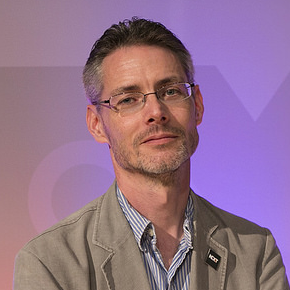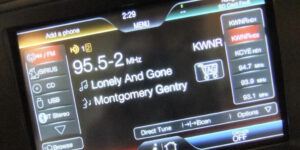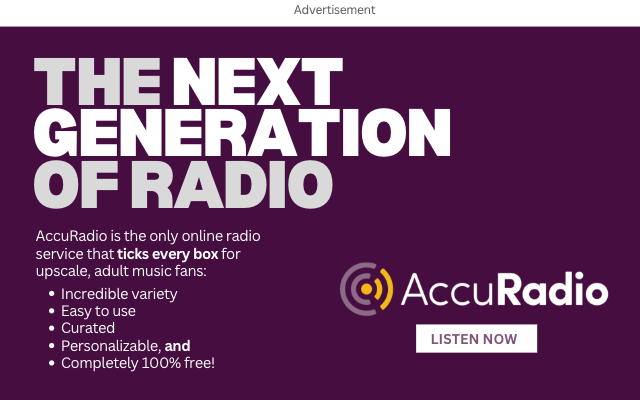James Cridland , radio futurologist, is a conference speaker, writer and consultant. He runs the media information website media.info and helps organise the yearly Next Radio conference. He also publishes podnews.net, a daily briefing on podcasting. Buy James A Coffee HERE.
, radio futurologist, is a conference speaker, writer and consultant. He runs the media information website media.info and helps organise the yearly Next Radio conference. He also publishes podnews.net, a daily briefing on podcasting. Buy James A Coffee HERE.
HD Radio launched in the US in 2002. Alongside some benefits in terms of metadata, the system offers a number of additional stations for listeners to enjoy.
The HD Radio website tells me that in Beverly Hills in California (thanks to 1990s TV it’s the only US zip code I know), with an HD Radio I can enjoy many more stations: KCRW’s Eclectic 24 on 89.9-2, K-SURF on 105.1-2, Pride Radio on 104.3-2, and an 80s version of KROQ on 106.7-2.
 Now that HD Radio is more than 21 years old, it might be interesting to know how much listening there is to these HD2/HD3 stations. And it turns out… not much.
Now that HD Radio is more than 21 years old, it might be interesting to know how much listening there is to these HD2/HD3 stations. And it turns out… not much.
In PPM markets, HD2/3 stations achieve a total 1.2% listening share of all radio listening.
This 1.2% figure is from Nielsen, sent to me by a trusted source. PPM numbers are not reliant on recall or people knowing they were listening to an HD2 or HD3 station. This 1.2% figure also includes FM translators who pick up an HD2/HD3 station and rebroadcast the audio on analog FM: so the actual number could be rather lower.
1.2% is not very much. It might be worth comparing that to other countries who are also marketing their radio platform as offering additional choice: those countries with DAB digital radio.
Australia doesn’t give a total share of listening figure, but does give a total cume figure. 22.9% of people aged 10+ in Sydney listen to “a DAB+ station” (not simulcast) in a typical week: 1.1mn people out of a potential 4.8mn. At breakfast, 9.9% of people listen to these stations, vs 71% listening to a station available on AM/FM.
The Sydney figures aren’t perfect: they also measure any online listening as well; but we do know that online listening is smaller than DAB listening.
The United Kingdom also doesn’t give us a like-for-like figure either. But, of the DAB-only stations, BBC Radio 6 Music by itself has a 2.5% share; Absolute Radio Network has a 3.9% share; Virgin Radio Network has a 1.2% share; KISSTORY has a 1.3% share, and there are many, many other DAB-only services. These figures include listening online as well: but DAB by itself, including AM/FM simulcasts, gets a share of 38.9% of all of radio listening. (Online is smaller, at 23.6%).
Either way, we can probably conclude that HD2/HD3-only stations are not doing nearly as well as DAB-only stations in other countries.
Why?
It might be two factors. First: the user interface. DAB presents a listener with an alphabetical list of stations. For HD Radio, the way you tune into 106.7-2 is to tune your radio to 106.7, wait until the HD Radio indicator lights, and then gingerly press the “up” button to get 106.7-2. That’s not a great experience.
I’d also suggest that “106.7-2” is hellishly confusing as a way to tell listeners how to tune in.
Second: I would doubt these stations are marketed well, if at all. In most cases, a listener to 106.7-2 won’t count as a listener to 106.7, so there’s a direct incentive for the radio programmer NOT to promote what’s on 106.7-2 – or, indeed, to spend any time on the programming. In the UK recently, I noted that Capital was running a promo every hour for its other stations Chill and Xtra.
This problem is especially acute when there are no new entrants, as is the case on HD Radio, where HD2/3 stations are all owned by the existing broadcaster. In fact, there’s a disincentive for anyone to mention HD Radio, since nobody wins if they do. The status quo is powerful.
If I understand the HD Radio business model, the people who own the proprietary broadcast technology, Xperi, also get a percentage of ad revenue (and fees from receiver sales). Another reason, perhaps, why broadcasters might be keener not to promote their HD2/3 stations.
And that’s before the reception issues that some people report. HD Radio is quite nice at blending between the analogue and digital signals where those exist, but for HD2/3 channels, everything just goes quiet if the signal isn’t good enough. DAB can do the same thing, but a single frequency network means it does it less often within the transmission area.
Poor UX, and a missed opportunity
I quite like the raw technology behind HD Radio. It’s a clever trick to offer more choice for listeners. The people who work there seem to be bright and good. However it seems to me that too little thought has been placed on the user interface for these additional stations. An HD Radio feels like a Blackberry – or even a Nokia – next to DAB Radio’s iPhone. Or next to Spotify or the iHeartRadio app.
It also seems clear to me that, from a programming point of view, the US radio industry has collectively failed to grasp the opportunities offered by HD Radio. That’s a mighty shame. It would seem that the industry has messed this up – and handed the future of in-car listening to SiriusXM, which works rather better and offers rather more choice.
I’d finally quietly observe that radio revenue in the UK and Australia is increasing, not decreasing; meanwhile, in the US, one of the biggest radio companies has just filed for bankruptcy.
Coming up…
In March, I’m speaking at: The Norwegian Local Radio Association’s national conference in Oslo (twice!); Radiodays Europe in Munich; and Podcast Movement Evolutions in Los Angeles.
In May, I’ll be at The Podcast Show in London, Momentum 2024 in Orlando, and Radiodays North America in Toronto.
In August I’m at Podcast Movement in Washington DC; in September, I’m at Radiodays Asia.


HD radio is the failure US broadcasters hoped it would become. After all, if you give the audience choice they will exercise it and broadcasters did not want to lose market share, so what did they do? They brought us IBOC (in-band on-channel) which limited HD to those who already own a stick (antenna), guaranteeind there would be no breakout success. The world standard (DAB) would’ve made more sense and would’ve made available new digital radios enabling choice in cars and in portable radios. IBOC never had a chance, and with good reason: Protection of existing market share allocation.